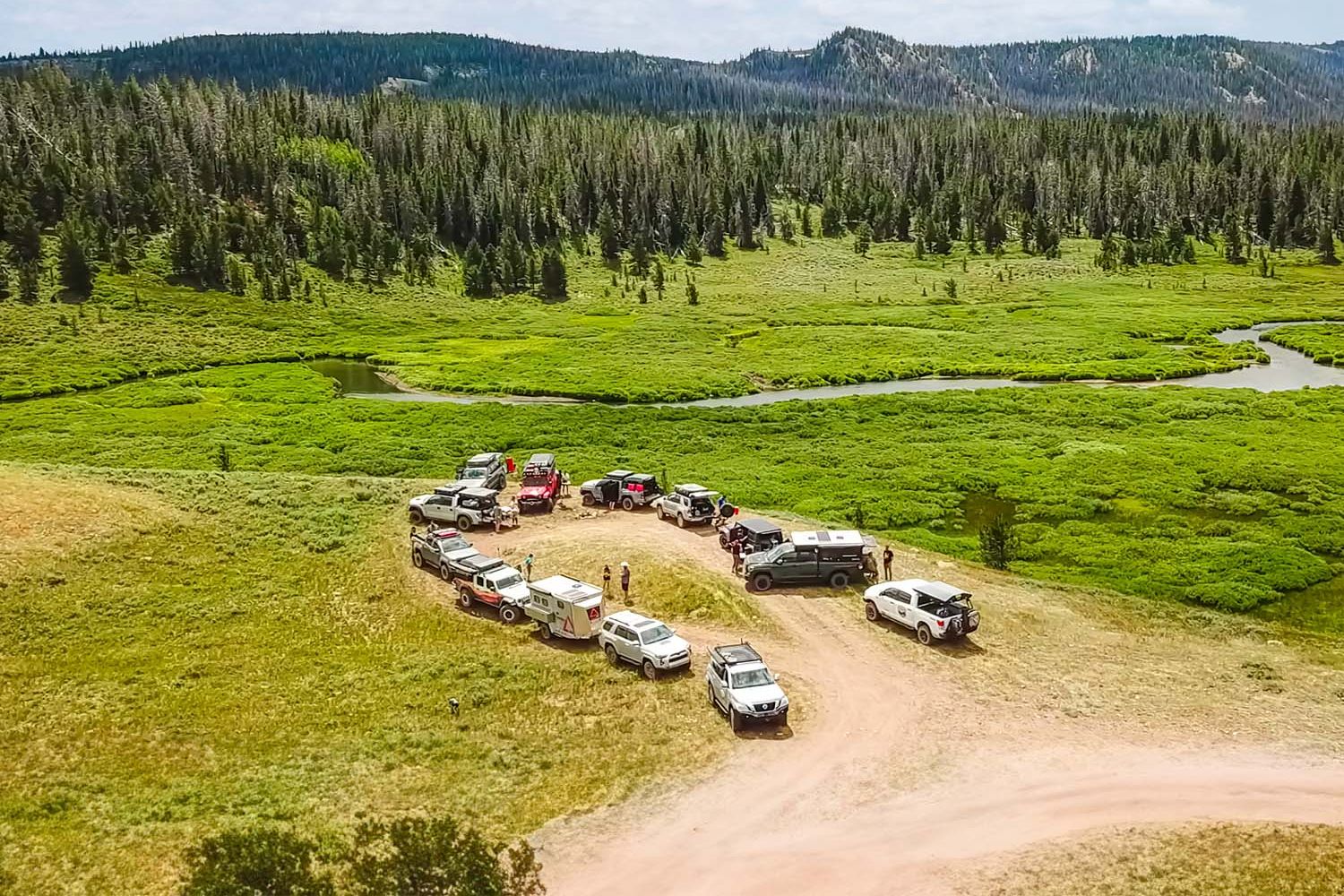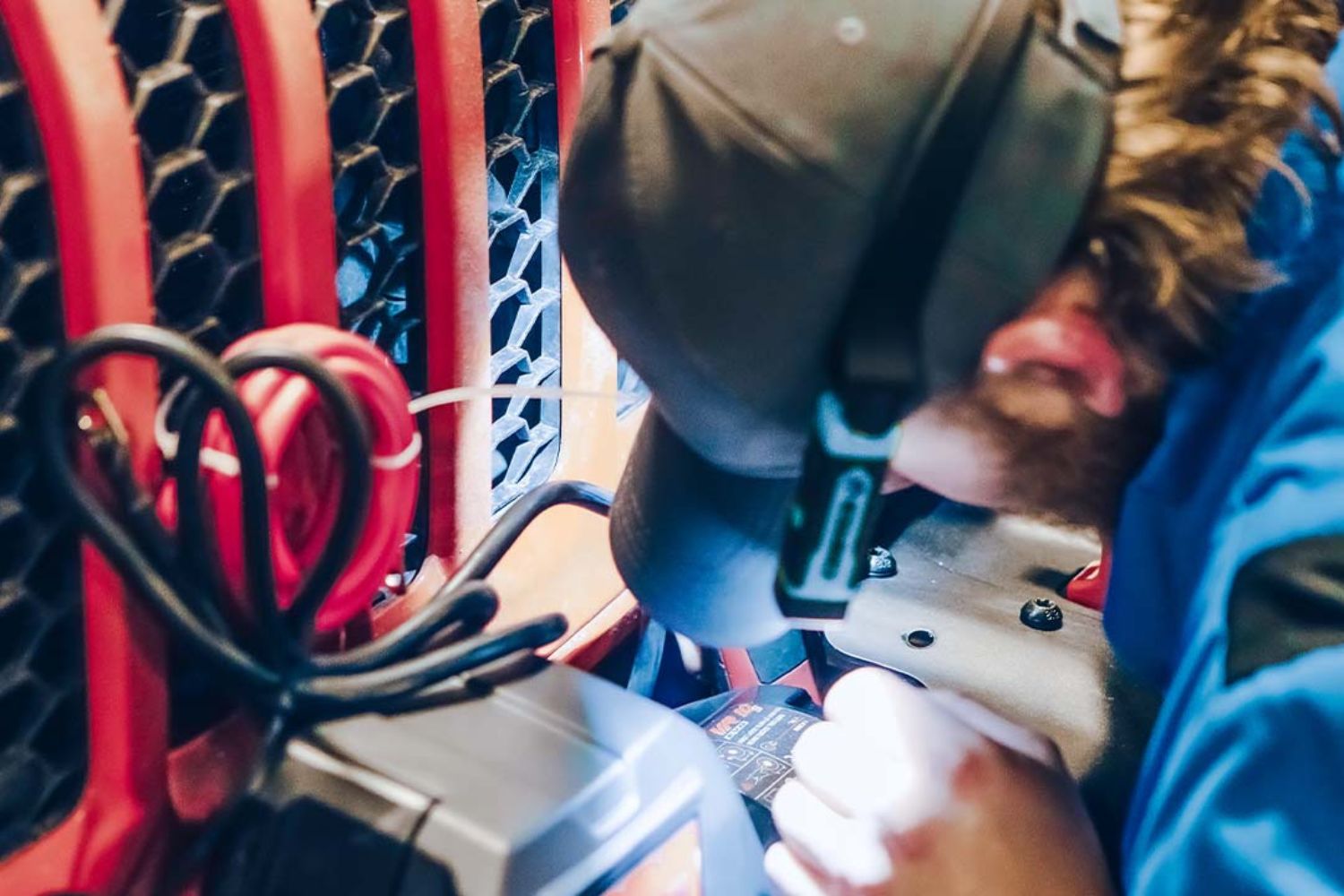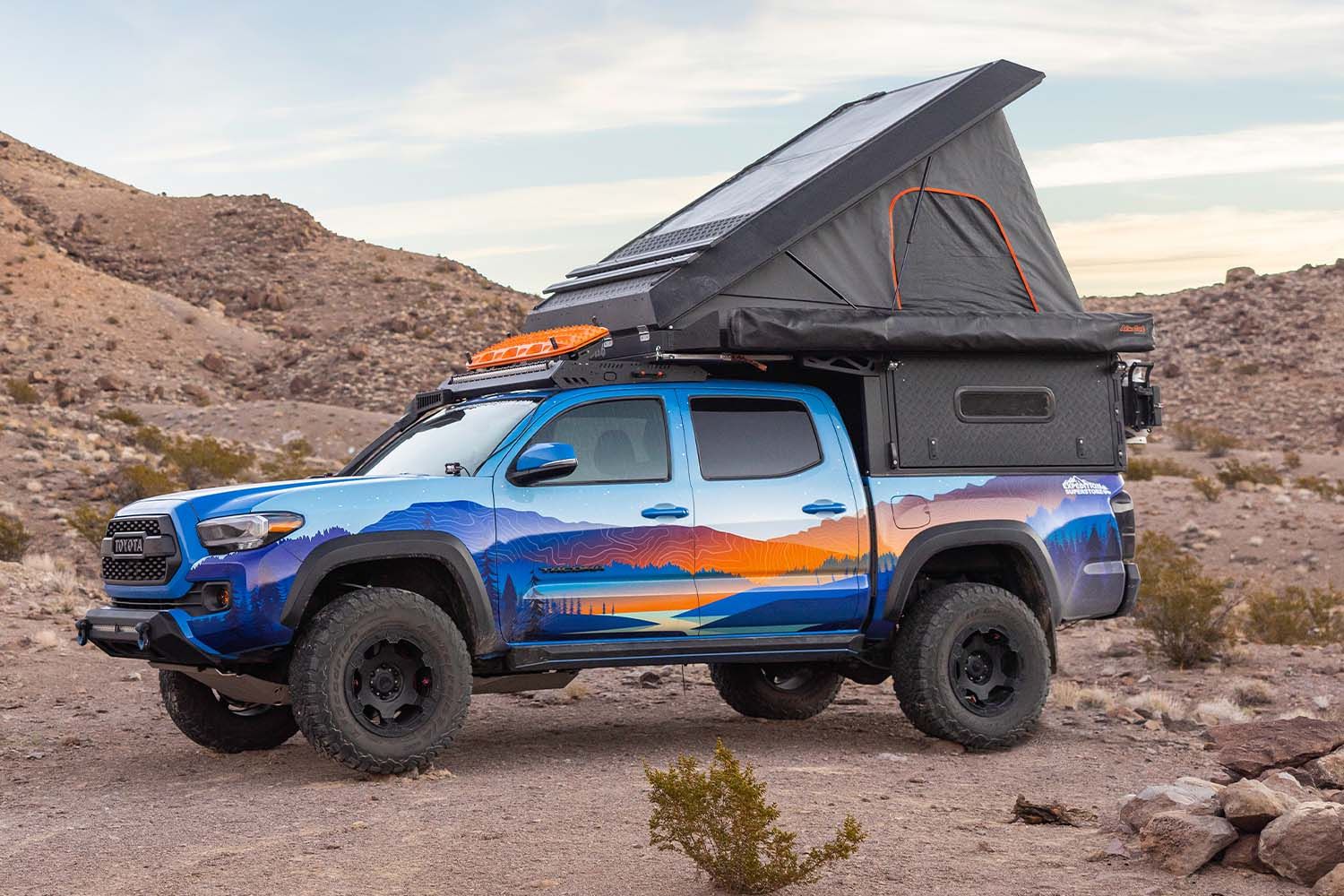Overlanding for Beginners: Getting Started
Posted by West Valley Staff on 12th Aug 2024
Absolutely, overlanding is a diverse activity that can mean different things to different enthusiasts. At its core, it's about self-reliant adventure travel to remote destinations where the journey is as important as the destination itself. Whether you're starting with local explorations on forest roads or planning grand cross-country expeditions, the appeal lies in the freedom and adventure of exploring off-the-beaten-path locations.
Getting started in overlanding can indeed be straightforward. Here are some basic steps to begin your journey:
Define Your Preferences and Goals
By defining your overlanding style based on the following considerations, you can tailor your preparations, route planning, and equipment choices to ensure a safe, enjoyable, and fulfilling adventure that aligns with your preferences and goals.
1. Purpose and Activities:
Understand what overlanding means to you. Clarify the purpose of your overlanding trips. Are you primarily interested in photography, wildlife observation, camping, hiking, fishing, biking, four wheel driving, or exploring along the way? Tailor your style to prioritize activities that align with your interests.
2. Short vs. Long Trips:
Determine whether you prefer short trips to nearby wilderness areas or are you gearing up for longer, more challenging journeys across multiple states or even countries? Short trips are typically local or regional, focusing on nearby natural areas that can be reached within a day or over a weekend. Longer journeys involve traveling across multiple regions, or countries, lasting extended periods of time and requiring more extensive planning and preparation.
3. Terrain and Difficulty Level:
Consider the type of terrain you want to explore. Are you interested in exploring rugged, off-road trails that require specialized equipment and skills, or do you prefer smoother paths and scenic drives that are more accessible?
4. Solo or Group Travel:
Decide whether you prefer traveling alone or with others. Solo overlanding offers independence and flexibility but requires self-sufficiency. Group travel can enhance safety and camaraderie but requires coordination and compromise.
5. Comfort Level:
Assess your comfort level with remote and potentially challenging situations. Longer journeys often involve camping in remote areas with limited amenities, whereas shorter trips might include stays in established campgrounds or lodge.

Start Small and Build Experience
It’s recommended to start small and begin with shorter trips to familiarize yourself with your equipment and build confidence before embarking on longer journeys.
Remember, overlanding is as much about the journey as it is about reaching a specific destination. It's about enjoying the outdoors, exploring new places, and challenging yourself to be self-reliant in different environments. Whether you're a weekend warrior or planning epic transcontinental adventures, the key is to start and gradually build your experience and setup based on your interests and comfort level.
Find the Right Gear
Starting out with the right gear is essential for a successful and enjoyable overlanding experience. Here’s a practical approach to getting outfitted without overwhelming yourself:
1. Basic Sleeping Gear:
Start with the basics for sleeping comfortably outdoors. A quality sleeping bag suitable for the expected temperatures and a sleeping pad for insulation and comfort are essential. As you gain experience, you can explore options like rooftop tents or ground tents depending on your preference for comfort and setup speed.
2. Cooking Gear:
Keep it simple initially with basic cooking equipment such as a portable stove or grill, utensils, pots, and pans. A cooler for keeping perishable food fresh is also useful. As you progress, you might invest in more specialized cooking setups like camp kitchens or portable ovens.
3. Shelter:
Depending on your vehicle and preference, you might start with a ground tent or a simple awning attached to your vehicle for shade and protection from the elements. Over time, you could upgrade to a rooftop tent or a more substantial shelter setup.
4. Essential Tools and Recovery Gear:
Ensure you have basic tools for vehicle maintenance and repair, such as wrenches, tire repair kits, and a portable air compressor. Recovery gear like a tow strap, shovel, and traction mats are crucial for getting unstuck in off-road situations.
5. Water and Storage:
Carry sufficient water for drinking and cooking, and plan for additional water storage if needed. Efficiently organize your gear with storage solutions like roof racks, storage boxes, or interior organizers to maximize space and accessibility.
6. Personal and Safety Items:
Pack essentials like a first aid kit, insect repellent, sunscreen, and personal hygiene items. Safety items such as a fire extinguisher and emergency blankets should also be included.
7. Learn from Others:
Use online forums, social media groups, and overlanding communities to gather recommendations on gear and learn from others’ experiences with similar rigs or travel plans. Crowdsourcing advice can help you make informed decisions and avoid costly mistakes.
Starting simple allows you to focus on the experience rather than being weighed down by excessive gear. As you gain more experience and understand your personal preferences and needs better, you can gradually expand and refine your overlanding setup. The key is to be adaptable and enjoy the journey, whether it’s a short weekend getaway or a longer expedition into remote terrain.

Prepare Your Vehicle
Vehicle preparation is crucial for any off-road adventure, whether you're starting with a basic setup or investing in heavily modified vehicles. Here are some key considerations based on your planned routes and terrain:
1. Make and Model:
To be honest, it is impossible to name just one make or mode that is the best choice for an overlanding rig. It really comes down to personal taste, budget, and intended use. Assess what type of vehicle you have or plan to use for overlanding. It could be a stock SUV, a pickup truck, or a specially modified off-road vehicle. The vehicle should be capable of handling the terrain you intend to explore.
2. Reliability:
This is key. Ensure your vehicle is in excellent mechanical condition. This includes regular maintenance checks on engine, brakes, suspension, and fluids.
3. Modifications:
While some start with basic setups, others invest in modifying their vehicles to enhance the capability of their rig. Depending on your planned routes and terrain, consider some of these advisable modifications that will improve your vehicle’s performance such as off-road tires, to provide better traction on rough terrain, roof racks for carrying extra gear such as fuel or spare tires, suspension upgrades to improve ground clearance. We disclose this warning - if you love tinkering with engines and are mechanically inclined, this aspect of Overlanding can result in a subsequent preoccupation all its own!
4. Vehicle Protection:
consider installing body armor such as skid plates to protect vital components like the engine, transmission, and fuel tank, from damage.
By preparing your vehicle with these essentials and modifications, you can enhance safety, reliability, and enjoyment during your off-road adventure. Adjust your preparations based on the specific challenges and conditions you expect to encounter on your journey.
Navigation and Planning Your Route
Overlanding often involves navigating through remote areas with minimal GPS signal. Familiarize yourself with maps, GPS navigation tools (both online and offline), and plan your routes and waypoints ahead of time:
1. Maps and Navigation Tools:
Obtain detailed topographic maps of the areas you plan to explore. These are essential backups in case of GPS failure.
2. GPS Devices:
Invest in a robust GPS device designed for off-road use. Devices like Garmin handheld GPS units are popular choices.
3. Smartphone Apps:
Use GPS navigation apps that offer offline maps, such as Gaia GPS, Maps.me, or Google Maps (offline mode).
4. Online vs. Offline Navigation:
Before your trip, use online tools like Google Maps or specialty websites to research routes, terrain, and potential obstacles. Ensure your GPS device or smartphone app can store maps offline. Download maps for the regions you'll be traveling through to mitigate reliance on a live internet connection.
5. Route Planning:
Plot your route on both digital and paper maps. Identify major landmarks, towns, water sources, and potential campsites along the way. Mark waypoints on your GPS or maps for critical locations such as turns, forks in the road, and campsites. This helps maintain orientation and ensures you stay on course.
6. Back up:
Carry at least two navigation devices—a GPS unit and a smartphone with offline maps. This redundancy ensures you have backup in case one fails. Print out key maps and route details as a last-resort backup. Include compass bearings and estimated travel times between waypoints.
7. Navigation Skills:
Familiarize yourself with basic navigation techniques such as using a compass and estimating distances on a map. Learn to identify prominent landmarks and terrain features that can help you navigate even without GPS.
By combining thorough preparation with reliable navigation tools and backup plans, you can navigate remote areas confidently during overlanding trips, even when GPS signals are scarce.
Safety and Emergency Preparedness
When you’re overlanding, there’s always a chance that something could go wrong. That’s why it’s essential to follow overlanding safety protocols and be prepared for off-road and off-grid emergencies:
1. Check the Weather:
Stay updated on weather forecasts for your location. Sudden changes in weather can significantly impact your safety and route choices.
2. Communicate Your Plans:
Inform someone reliable about your travel itinerary, including your planned route, expected duration, and contact information. This ensures that someone knows where you are supposed to be and can raise an alarm if necessary.
3. First Aid:
Ensure you have a comprehensive first aid kit onboard. It would be wise to invest in first aid or even survival training which will give you the skills and knowledge to deal with any situation should it arise, such as treating injuries, recognizing symptoms of exposure or dehydration, and knowing how to signal for help.
4. Communication:
Many Overlanding areas have little to no cellular service, so you must always consider an alternative to your smartphone for your means of communication. There are compact satellite communicators, such as a satellite phone or emergency beacon, that will allow you to send text messages or an SOS signal to emergency services within your location.
5. Campfire Safety:
Make sure you light a campfire in existing campfire rings where permitted to do so and ensure there are no fires bans in place. Never leave a campfire unattended. Extinguish the fire with water until it is cold enough to touch – if it’s too hot to touch, it’s too hot to leave. To prevent fire emergencies, keep a fire extinguisher nearby while you’re cooking or starting fires.
6. Off-Road Emergencies:
Some common off-road emergencies include flat tires, engine overheating, getting stuck in mud, and power loss. It’s crucial to have the proper equipment, including tire jack, spare tires, jumper cables, and a winch to pull yourself out if you find yourself stranded amongst challenging terrain. Basic tools are a necessity like pliers, screwdrivers, and wrenches to fix minor engine issues. It’s also vital to have a full tank of gas and extra water and food supplies
7. Respect Wildlife and Nature:
Be mindful of wildlife encounters and respect their habitats. Keep a safe distance and avoid actions that may provoke animals.
8. Leave No Trace:
Pack it in, Pack it out! Be mindful of the environment and practice responsible overlanding - leave what you find and pack out all your trash.
9. Skills and Knowledge:
Learn basic off-road driving techniques, navigation skills, and outdoor survival skills. Joining local clubs or forums can provide valuable insights and connections with experienced overlanders.
By maintaining a disciplined approach and prioritizing safety and preparedness, you can fully enjoy the adventure of overlanding while minimizing risks and ensuring a memorable journey.

If you would like to speak to an expert in overlanding, or find the right gear for your next adventure, Expedition Superstore can help you. We are vehicle-based, outdoor exploration specialists, obsessed with helping adventurers get all the essential gear they need to travel unfamiliar territories including building custom overlanding vehicles to support their self-sufficient, remote, and off-road explorations.
The store evolved from a deep love of the outdoors, a passion for exploring new places and an enthusiasm for customizing vehicles to be durable and capable of reaching the end of the trail and beyond. The main reason overlanding appeals to many is because it offers an authentic and unique adventure experience where the traveler is immersed in the environment, connecting with nature, detached from digital distractions and day-to-day tribulations, and is instead tackling the challenges overlanding throws at you.
Expedition Superstore is located in Salt Lake City, Utah and is open 9am-6pm Monday to Friday and 9am-3pm on Saturday. Please come in and check out all the gear and rigs on display in our showroom.

